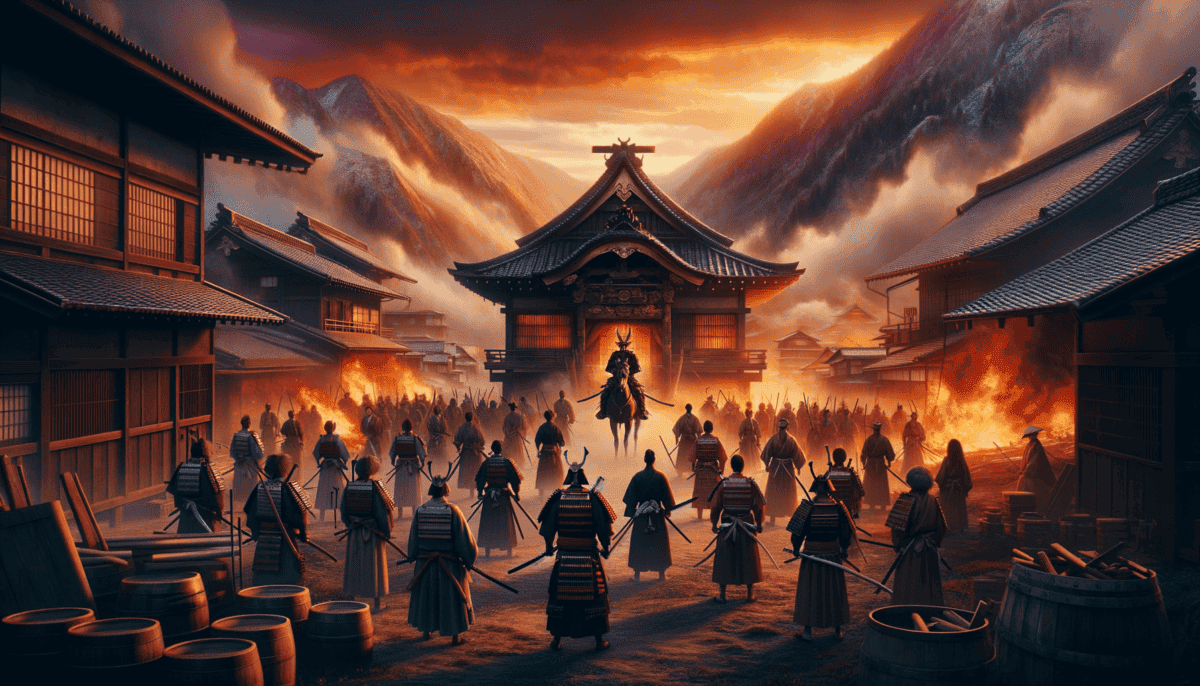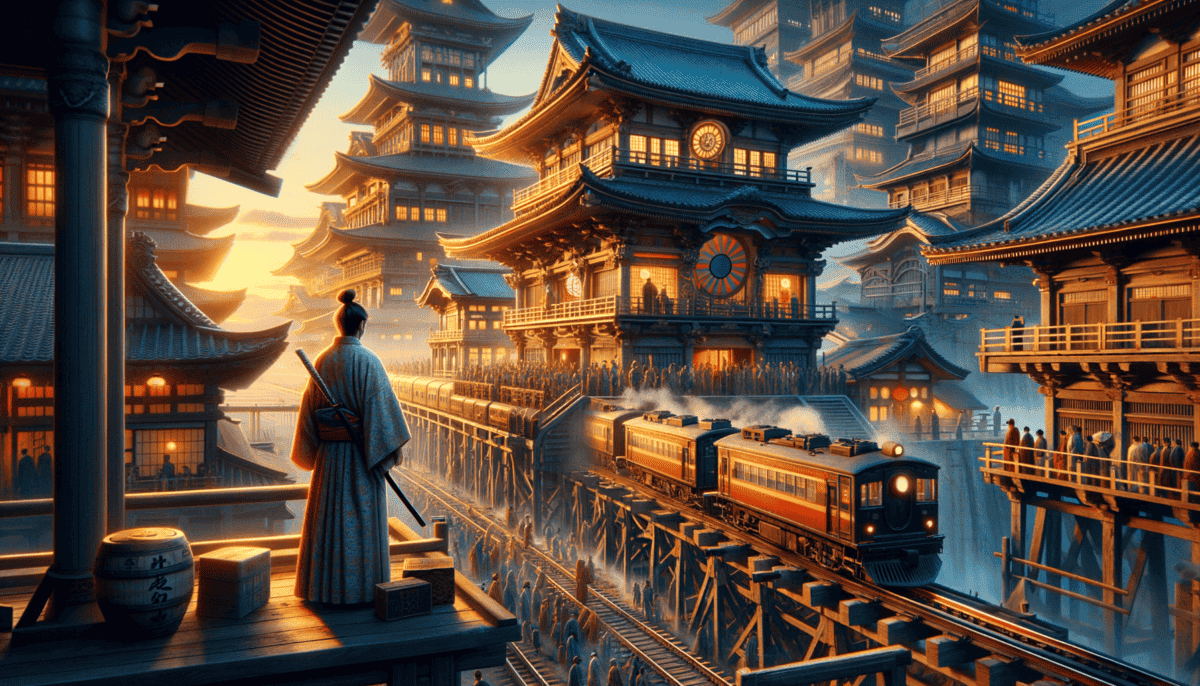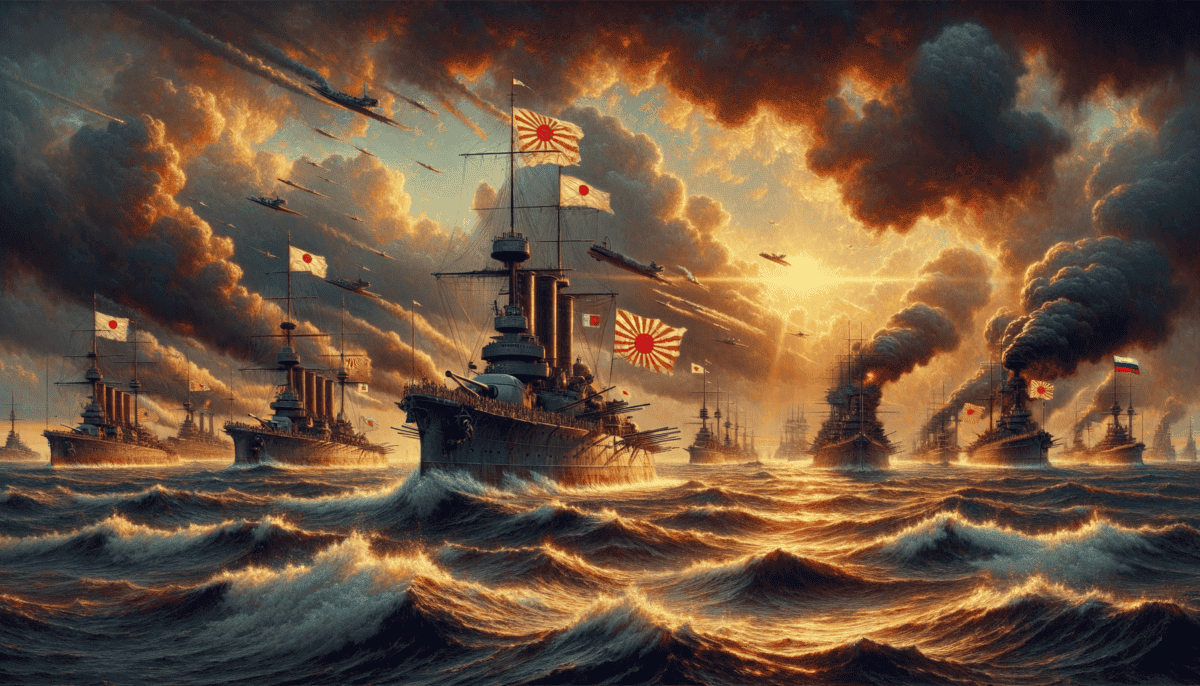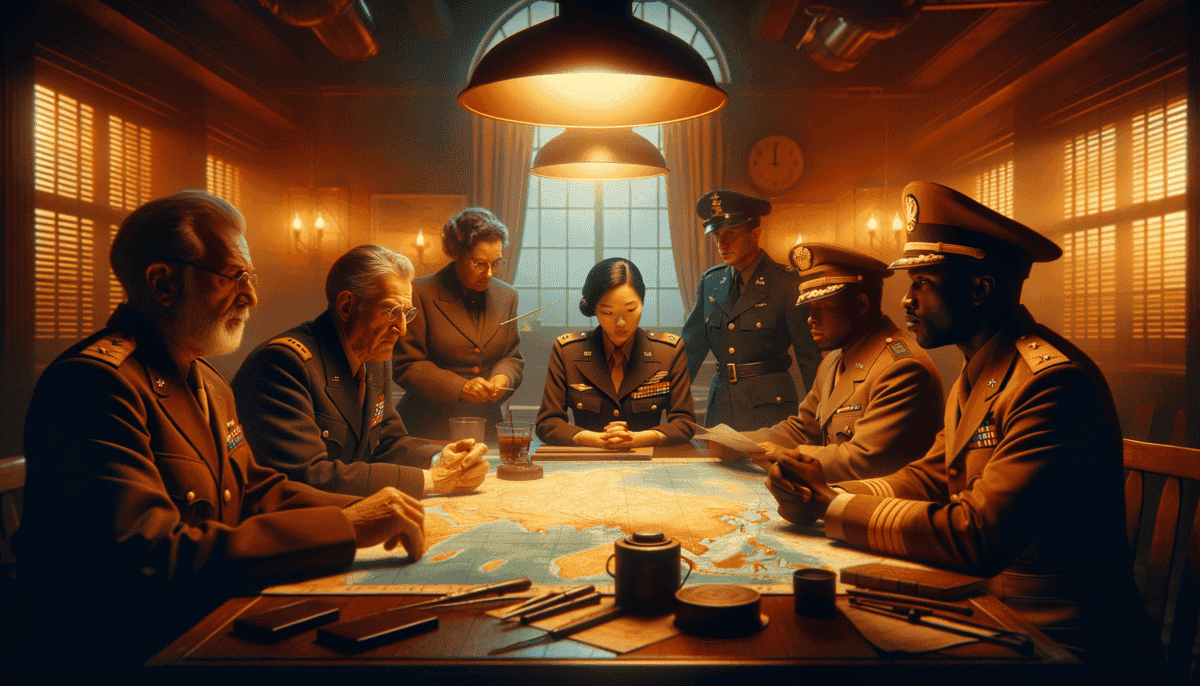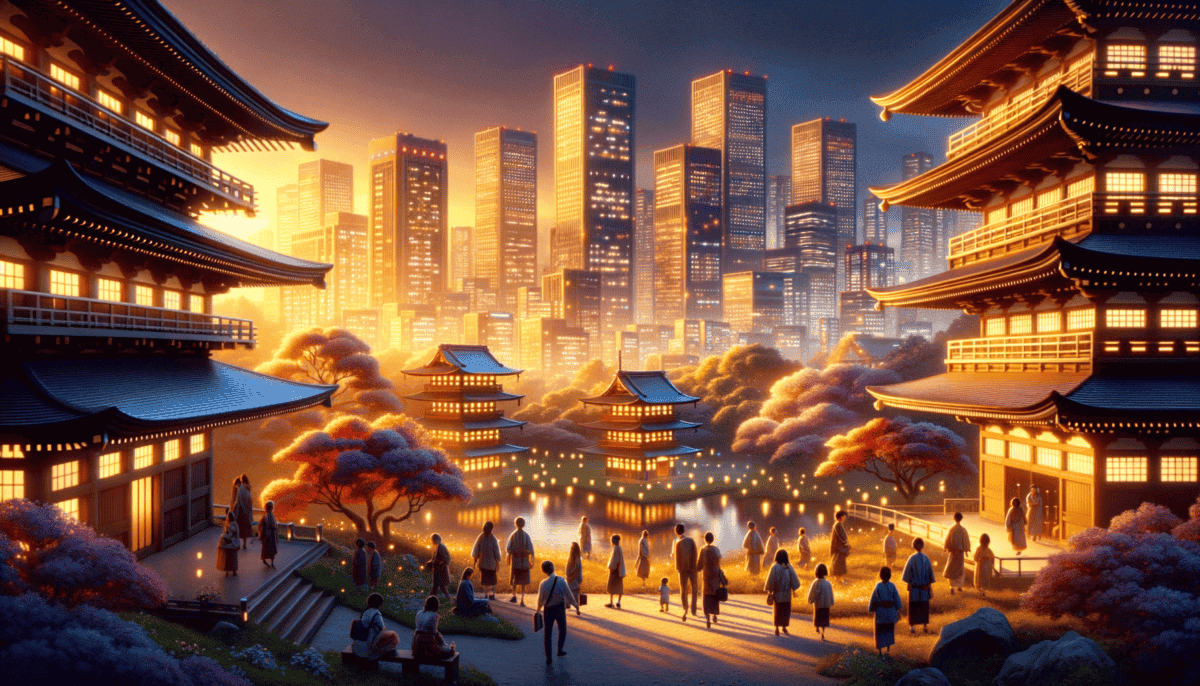The Way of the Warrior
Young Takeshi sat cross-legged on the tatami mat, his small hands resting on his knees. The morning sun peeked through the paper walls of his family's home, casting gentle shadows across the room. At just seven years old, he was about to begin his journey to become a samurai, just like his father and grandfather before him.
"Remember, my son," his father spoke softly, his armor gleaming in the early light. "The way of the warrior is not just about being strong. It is about having a pure heart."
The boy nodded eagerly, his eyes wide with wonder. He had grown up hearing stories about the brave samurai who protected their land and lived by the code of Bushido. Now it was his turn to learn these ancient ways.
“A samurai must be brave, honest, and loyal,” his father continued. “We fight not just with swords, but with wisdom.”
Takeshi watched as his father demonstrated the proper way to hold a wooden practice sword. The movements were like a dance – smooth and graceful. Outside, cherry blossoms floated on the breeze, their pink petals dancing in the air.
Life in the Castle Town
Their home sat in the shadow of the great castle, where the daimyo – their lord – lived. The streets bustled with activity as merchants sold their goods and craftsmen worked in their shops. Takeshi loved watching the other samurai warriors practice in the training grounds, their armor shining like dragon scales in the sun.
"Why do we serve the daimyo, father?" Takeshi asked one day as they walked through the town.
His father smiled. "We protect our people and keep peace in our land. That is the highest honor a samurai can have."
• Courage
• Honor
• Loyalty
• Wisdom
• Kindness
During his first lesson, Takeshi learned to bow properly – showing respect to his teachers and elders. His back straight as a bamboo pole, he practiced until he got it just right.
"Very good," his teacher praised. "A samurai's spirit shows in everything he does, even in how he bows."
The First Test
One morning, Takeshi faced his first real test. He saw an older boy taking food from a merchant's stand without paying. His heart beat fast – should he speak up or stay quiet?
Remembering his father's words about honor, Takeshi stepped forward. "A samurai must be honest," he said to the boy. "Please return what you took."
The older boy looked surprised, then ashamed. He put the food back and apologized to the merchant. Takeshi's father, who had watched from afar, placed a proud hand on his son's shoulder.
"Today you showed true samurai spirit," he said. "Not through fighting, but through doing what was right." ⚔️
That night, as Takeshi lay on his futon, he thought about all he was learning. The way of the warrior was not just about being strong or brave. It was about protecting others and standing up for what was right.
Through the open window, he could hear the night birds singing and see the stars twinkling above the castle towers. Tomorrow would bring new lessons, new challenges, and new chances to prove himself worthy of the samurai way.
As sleep began to take him, Takeshi smiled. He was on his way to becoming not just a warrior, but a protector of peace and justice in their land. The cherry blossoms continued to fall outside his window, nature's gentle reminder that every journey begins with a single step.
The Time of Great Change
The land of Japan was not always peaceful. Many lords called daimyo fought each other to rule more land. This was a time when everyone had to be brave and smart.
The Three Great Leaders
Three special leaders helped bring peace to Japan. Their names were Oda Nobunaga, Toyotomi Hideyoshi, and Tokugawa Ieyasu. They were like three strong trees growing in a garden, each one helping to make Japan stronger.
“To unite is to bring peace,” said Oda Nobunaga, the first of these leaders. “We must work together as one.”
Nobunaga was very clever. He used new things called guns to win battles. Many people were scared of these loud weapons, but Nobunaga knew they would help make Japan stronger.
• Guns from Portugal
• Better farming tools
• Big castle towns
• New ways to make swords
• Trading with other countries
The Clever Helper
After Nobunaga, came Hideyoshi. He started as a poor farmer’s son but became very important. He was like a clever fox, always thinking of new ideas.
“Even a simple person can do great things,” Hideyoshi would say. He made laws to help farmers and built beautiful castles that touched the clouds.
People started moving to big towns near these castles. Merchants sold things in shops, and artists made beautiful paintings. Japan was changing fast!
The Peace Maker
Last came Tokugawa Ieyasu. He was patient, like a turtle who knows good things come to those who wait.
“Peace is like a garden,” Ieyasu said. “It needs time and care to grow strong.” He made his home in a place called Edo, which would later become Tokyo.
Under Ieyasu’s rule, Japan became very organized. He made new rules that helped everyone know what they should do. Farmers grew rice, craftsmen made things, and samurai protected the peace.
A New Way of Life
People started learning new things. Some learned to read and write. Others learned to make beautiful pottery or paint pictures. Markets were full of happy people buying and selling goods.
“Look how our town has grown!” a merchant named Kenji said to his son. “When I was young, this was all empty fields. Now we have streets full of shops and houses!”
Children played games in the streets while their parents worked. The sound of hammers and saws filled the air as carpenters built new houses and shops.
Changes for Everyone
Even samurai had to change. They weren’t fighting as much anymore, so they learned new things like writing poems and doing tea ceremonies. Some became teachers or helped run the government.
Japan was becoming different, but in a good way. People from other countries started visiting, bringing new ideas and things to trade. Everyone was curious about these visitors and their strange ways.
Looking to Tomorrow
As the sun set each day over the peaceful towns and villages, people felt happy about their new life. They could work hard, learn new things, and dream about tomorrow.
Young children listened to stories about the old fighting days, but they were glad to live in more peaceful times. They could go to school, play with friends, and help their families grow stronger.
The three great leaders had planted seeds of change that would grow into something wonderful. Like a beautiful garden, Japan was blooming with new ideas and ways of living.
A New Dawn for Japan
The year was 1868, and Japan was about to wake up like a sleeping giant. For hundreds of years, Japan had kept to itself, like a turtle hiding in its shell. But now, everything was about to change!
The Young Emperor’s Dream
Emperor Meiji was only 15 years old when he became Japan’s new leader. He had big dreams for his country. “We must learn from the world,” he said, his eyes bright with hope.
• Everyone could choose their jobs
• Boys and girls went to school
• Trains came to Japan
• People wore new kinds of clothes
• Cities got electric lights
Saying Goodbye to Old Ways
The samurai had to change too. They couldn’t carry their swords anymore. Many became teachers or worked in offices. Some were sad, but others saw it as a new adventure. ️
“Times change like the seasons,” said Takeshi, an old samurai who became a school teacher. “We must change too.”
Trains, Schools, and New Things
Choo-choo! The first train in Japan made people jump with surprise. “It moves like a dragon!” little children shouted, pointing at the iron horse.
Schools opened everywhere. Boys and girls learned to read, write, and do math. They studied science and learned about other countries. The sound of children reciting lessons filled the air.
In the cities, tall buildings started to grow like bamboo shoots after rain. Electric lights made the nights bright like daytime. People rode bicycles and wore Western clothes.
Making New Things
Factories started popping up like mushrooms after rain. The air filled with the sounds of machines. Workers made everything from cloth to ships.
“Look at this!” said Mari, showing her friend a light bulb. “We made this in our factory. No more candles needed!”
Learning from Others
Japan sent smart young people to America and Europe. They came back with exciting new ideas. They learned about trains, machines, and new ways to build things.
A Country Transformed
Cities grew bigger and busier. Telegraph wires carried messages faster than birds could fly. Ships with steam engines puffed across the sea, carrying Japanese goods to far places.
Young Kenji watched a train zoom past his village. “Grandfather,” he asked, “what was it like before all these changes?”
His grandfather smiled. “It was quieter then. But now, Japan is growing strong and smart. We are learning new things every day.”
Moving Forward
Japan was changing faster than cherry blossoms bloom in spring. Some changes were hard, but most made life better. People had new jobs, new clothes, and new dreams.
“We are building something amazing,” Emperor Meiji told his people. “Something that will make Japan shine bright in the world.” ⭐
As the sun set over the mix of old temples and new factories, Japan was becoming something new and exciting. The sleepy island nation was now wide awake and ready to show the world what it could do!
The Rise of an Empire
The year was 1894, and Japan was ready to show how strong it had become. Like a young tiger testing its claws, Japan was about to make its first big moves.
A Time of Testing
Japanese ships, shiny and new, floated in the harbor. Captain Togo stood on his ship’s deck, looking at his sailors. “We have trained hard,” he said. “Now we will show what we can do.”
• Modern warships
• Trained soldiers
• New weapons
• Strong factories
• Brave leaders
The First Big Test
Japan and China had a fight over Korea. Many people thought big China would win easily. But Japan had a surprise for everyone!
“Our new ships are faster,” said Admiral Ito. “Our guns are better. Our sailors know what to do.”
The Japanese navy won battle after battle. The world watched in amazement. Little Japan had beaten mighty China!
Growing Stronger
Ten years later, Japan faced an even bigger test. Russia, one of the world’s strongest countries, thought it could push Japan around. Boy, were they wrong! ⚔️
Japanese ships sailed out one dark night. They found the Russian ships sleeping near Port Arthur. Boom! The surprise attack worked perfectly!
“Look how far we’ve come,” said General Nogi to his soldiers. “From learning about modern weapons to using them better than anyone!”
The World Takes Notice
When Japan beat Russia in 1905, everyone was shocked. A small Asian country had defeated one of Europe’s biggest powers!
Building an Empire
After these big wins, Japan started to grow bigger. It took control of Korea and parts of China. Japanese ships sailed everywhere, and Japanese traders sold things all over Asia.
Little Akiko watched soldiers march through Tokyo’s streets. “Why do we need such a big army?” she asked her father.
“To protect what we’ve built,” he answered. “And to make Japan even greater.”
Pride and Power
Japan felt proud and strong. Its cities were modern, its army was powerful, and its ships sailed all the seas. But some people worried that Japan was becoming too proud.
“We must be careful,” said wise old Mr. Tanaka. “Power is like a double-edged sword. It can protect us, but it can also hurt us if we’re not careful.”
Dreams of Glory
Japanese leaders dreamed big dreams. They wanted Japan to be as powerful as Britain or America. Factories worked day and night, making ships, guns, and machines.
Young officers like Lieutenant Yamamoto trained hard. “One day,” they said, “Japan will be the strongest country in Asia!”
The sun was rising high on Japan’s empire. But dark clouds were gathering too. Like a powerful wave, Japan’s strength would soon crash against other strong nations in a way that would change everything. ⛈️
Storm Clouds Gathering
The calendar showed 1941. Japan’s power had grown big and strong, like a mighty oak tree. But this tree was reaching too far for sunlight.
Rising Tensions
Little Kenji watched warships in Tokyo Bay. “Why are there so many ships, Grandfather?” he asked.
“Because Japan is getting ready,” his grandfather replied. “Other countries don’t want us to be strong.”
• Not enough oil
• Other countries were angry
• Needed more land
• Wanted to be strongest in Asia
• Big decisions to make
Hard Choices
Admiral Yamamoto sat in his office, looking at maps. The walls seemed to close in around him. “We need oil,” he said to his officers. “America won’t sell it to us anymore.” ️
“What can we do?” asked a young officer.
“We must either step back… or step forward very boldly.”
The Big Plan
In secret rooms, Japanese leaders made a big plan. Their ships would sail across the Pacific Ocean. They would surprise America’s ships at Pearl Harbor. ⚓
“If we strike first,” said General Tojo, “we can win quickly. Then America will leave Asia alone.”
But wise old Admiral Yamamoto wasn’t so sure. “I fear we are waking a sleeping giant,” he whispered.
The Surprise Attack
On December 7, 1941, Japanese planes flew over Pearl Harbor. The sun was just rising. American sailors were still sleeping. ✈️
The attack was perfect – just like in practice. But it would change everything.
Big Battles Begin
Japan’s army and navy were very strong. They won many battles at first. Japanese soldiers took over many places:
• The Philippines
• Singapore
• Many Pacific islands
Pride Before the Fall
Captain Tanaka stood on his carrier’s deck. His planes had just come back from bombing Darwin, Australia. “See how strong we are!” he said proudly. ️
But some older officers remembered what Admiral Yamamoto said: “We can run wild for six months… maybe a year. After that, I have no confidence.”
Warning Signs
Little Kenji noticed changes in Tokyo. “Why are there fewer cars?” he asked his mother.
“We need the metal for ships and planes,” she said. “Everyone must work hard now.”
Food became harder to find. Ships carrying supplies couldn’t get through anymore. American submarines were everywhere.
The Tide Turns
Big battles happened at places with strange names: Midway, Guadalcanal, Leyte Gulf. Japan started losing ships and planes faster than they could build new ones.
The sun was setting on Japan’s dreams of empire. Dark times were coming. But no one knew yet how dark they would be. ⛈️
A Nation at Risk
By 1944, even children knew Japan was in trouble. American planes flew over cities. Ships couldn’t bring food. The mighty empire was starting to crack.
“What will happen to us?” Kenji asked his grandfather.
“I don’t know, little one,” the old man said. “But Japan has survived hard times before.”
From Ashes to Rising Sun
Summer 1945 brought dark clouds over Japan. Little Kenji held his mother’s hand as they hurried to a shelter. American planes flew overhead again. ️
The Darkest Days
“When will it end, Mama?” Kenji asked, his voice trembling.
“Soon, my brave boy. Soon.” But even Mama’s voice sounded unsure.
• Cities were burning
• Food was scarce
• People were tired
• Leaders wouldn’t give up
• Big changes coming
A New Kind of Sun
On August 6, a bright light flashed over Hiroshima. Then on August 9, another over Nagasaki. They were atomic bombs – something no one had seen before. ☀️
Emperor Hirohito looked at his garden. Cherry blossoms had turned to ashes. “We must end this,” he said softly. “To save our people.”
Peace at Last
On August 15, 1945, radios crackled across Japan. The Emperor’s voice spoke to his people for the first time ever:
“We must bear the unbearable… and create peace for all time.”
Soldiers put down their swords. Ships came home. The long war was over. ️
New Friends
American soldiers came to help rebuild Japan. They brought food and medicine. Little Kenji was surprised – they smiled and gave him candy.
“But weren’t they our enemies?” he asked his grandfather.
“Yesterday’s enemies can be tomorrow’s friends,” the old man smiled. “That’s how peace grows.”
Building a New Japan
Japan changed quickly. People worked hard to rebuild. New factories made toys instead of tanks. Children went back to school.
Streets that once held marching soldiers now had baseball games and ice cream shops.
Rising Again
By 1964, Tokyo hosted the Olympic Games. The whole world watched Japan shine again. But this time, it was different.
“Look, Grandfather!” said Kenji, now a young man. “Our city has the fastest trains in the world!”
“Yes,” nodded the old man. “And better things than just trains.”
Today’s Japan
Japan became famous for new things:
• Amazing technology
• Beautiful cars
• Fun games and toys
• Delicious food
• Peaceful ways
A Different Kind of Power
Kenji grew up to be a teacher. He tells his students about Japan’s journey. “We learned that real strength isn’t about fighting,” he says. “It’s about building, creating, and helping others.”
Looking Forward
Today’s Japan is strong in new ways. Its cities glow with neon lights. Bullet trains zoom through the countryside. Robots help people work.
But in quiet gardens, old stone lanterns still stand. Cherry trees still bloom each spring. The old and new Japan live together in peace.
Like the sun on its flag, Japan rises each morning to shine in new ways. Not as an empire of war, but as a nation of peace, creativity, and hope.
The Future Beckons
Now a grandfather himself, Kenji watches his granddaughter play with her robot toy. “What will Japan be like when you grow up?” he wonders.
She smiles and shows him her drawing – a future city with flying cars and rainbow bridges. “It will be wonderful,” she says. “Because we build things now, we don’t break them.”
And in that simple wisdom, the story of Japan’s greatest victory lives on – the victory of peace.


